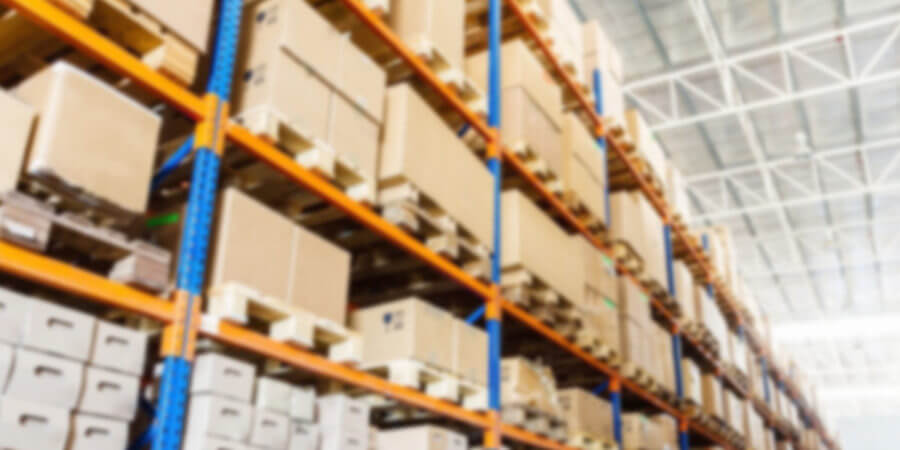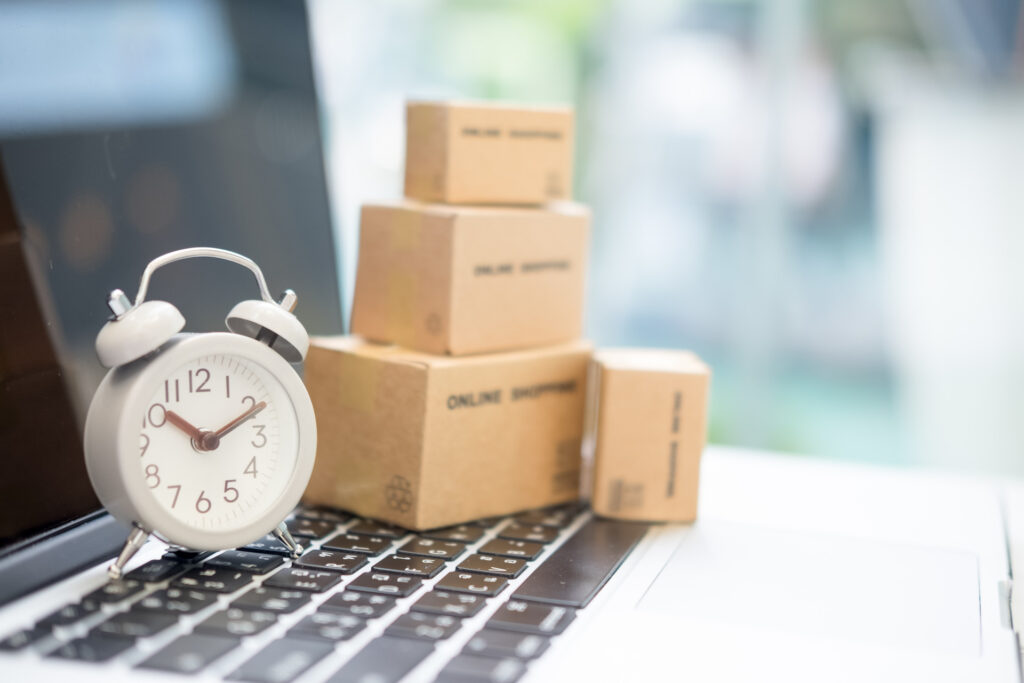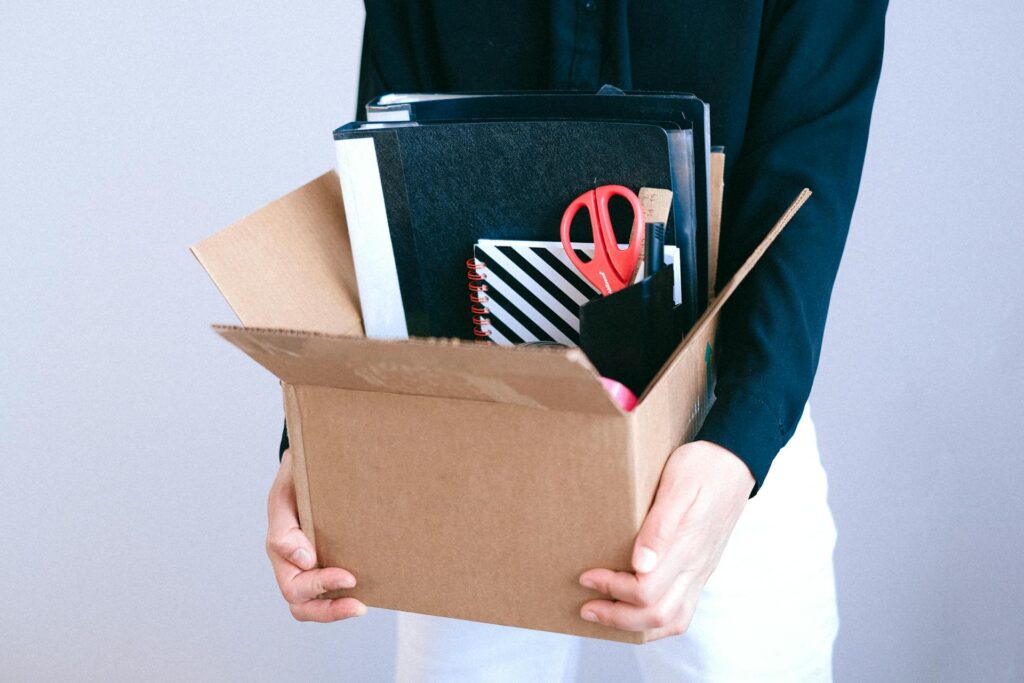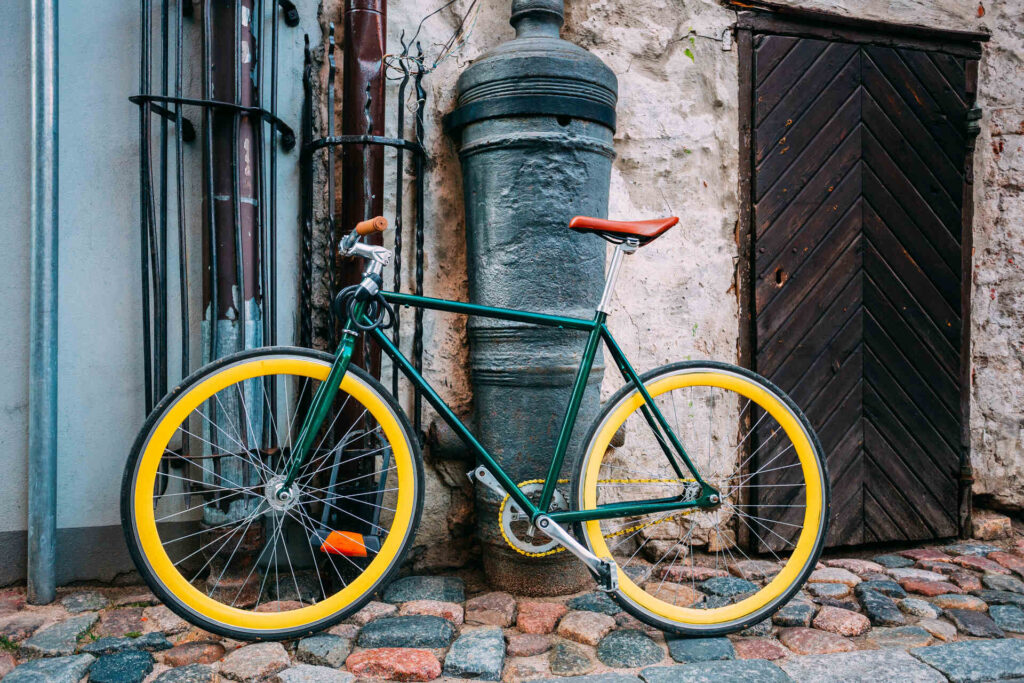An international move involves numerous tasks, and one of the most crucial is learning how to pack kitchen items for moving. Your kitchen is undoubtedly a treasure trove of valuable and essential items, from fragile glassware and cherished cookware to delicate porcelain. Packing these possessions combines thoughtful organization, quality materials, and a strategic approach. Let’s dive into a comprehensive guide on how to pack kitchen stuff for moving, ensuring they arrive at your international destination intact and ready for use.
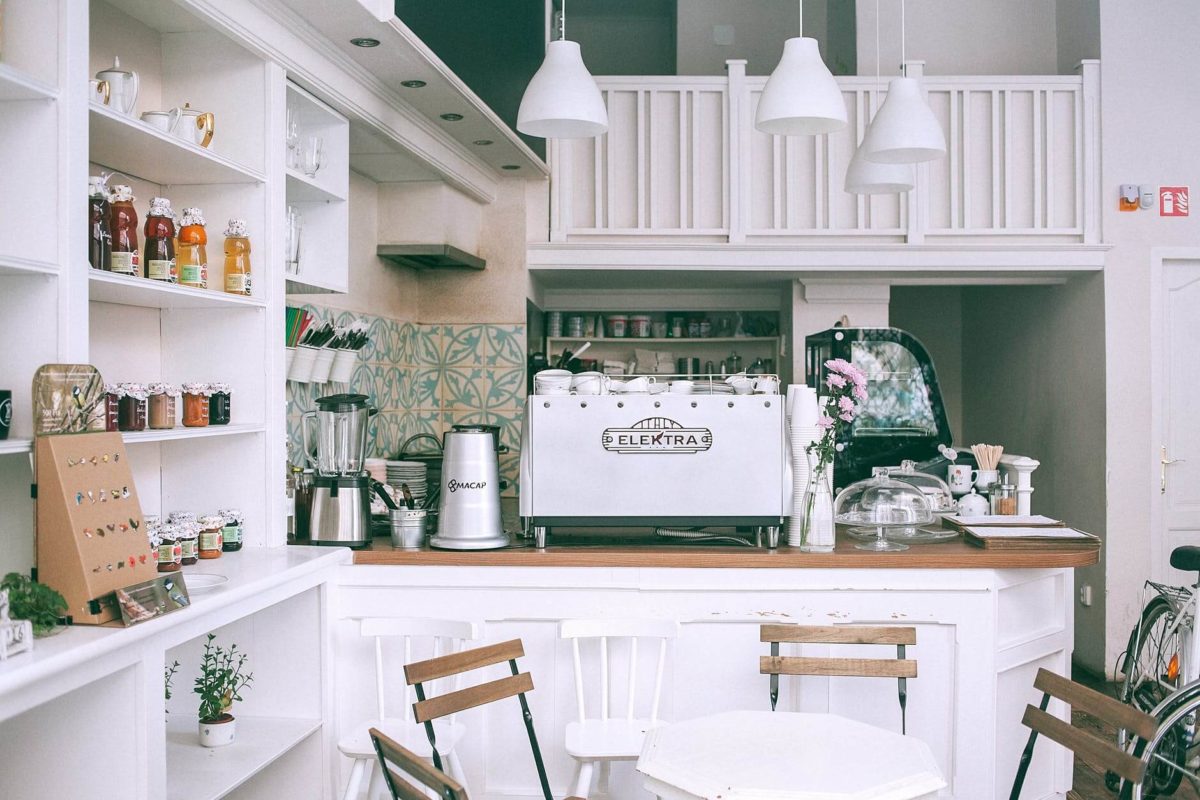

How to pack my kitchen items for moving? Begin by sorting and decluttering. Use sturdy boxes and paper. Wrap fragile items individually, and cushion the boxes with towels or linens. Label each box for easy unpacking.
How to Pack Kitchen Items for Moving – Start With Decluttering
Relocating to another country is an exhilarating journey, but packing for a move demands careful planning. As you stand at the threshold of this exciting chapter, it’s essential to make conscious decisions about what to keep and what to get rid of. Streamlining kitchenware ensures an efficient transition.
To package efficiently, consider prioritizing practical essentials that align with your new culinary adventures. Now that you are moving abroad, you have the opportunity to declutter your kitchenware and start fresh at your new home. Prioritize what truly enhances your cooking experience in your new home while considering the practicality and space constraints. Streamline your kitchen by parting ways with items that no longer serve a purpose or can be easily replaced.
High-quality cookware, such as expensive knives, and versatile kitchen appliances should make the cut. Fragile glassware and cherished mementos also deserve a place on your packaging list, as they contribute to a sense of familiarity. On the other hand, consider parting with duplicate items, worn-out dishes, plastic containers, damaged glasses, mugs, and old plates that you no longer use.
Bulky and seldom-used gadgets might not justify the effort and cost of transportation. Perishable goods should be consumed or given away before the move. Additionally, assess the availability and cost of certain items in your new location. If they can be easily purchased there, it might be wiser to let them go.
Create a Packing Plan
Crafting a packaging plan is the next step in orchestrating a seamless international move. When it comes to your kitchenware, a well-structured timeline ensures that the heart of your home is efficiently packed and ready for moving overseas.
Drawing from essential packing tips, your plan should focus on protecting fragile glassware, cherished cookware, and delicate porcelain. Here is what your timeline should look like:
- 4-6 weeks before – Start by decluttering your kitchen. Assess each item and decide what to keep, donate, sell, or discard.
- 3-4 weeks before – Begin gathering packaging materials, such as sturdy boxes, bubble wrap, packing paper, and tape. Make a list of essential kitchenware you’ll need as soon as you arrive at your new destination.
- 2-3 weeks before – Sort and box up non-essential kitchenware, such as specialty appliances, seasonal items, and infrequently used utensils.
- 1-2 weeks before – Begin packaging fragile items, like glassware, porcelain, and delicate cookware. Wrap each item individually with paper or bubble wrap and secure them in boxes with appropriate cushioning.
- 1-2 weeks before – Pack remaining kitchenware, prioritizing everyday essentials like pots, pans, basic utensils, and cookware. Keep out a few essential items for use during the final days before the move.
- 3-4 days before – Empty your refrigerator and pantry of perishable items. Try to use up or give away food that won’t survive the move.
Gather Packing Supplies
Packaging your kitchenware for an international move demands the right tools and materials to ensure their safety throughout the journey. As you embark on this process, it’s crucial to gather a comprehensive range of supplies that cater to the diverse nature of your belongings.
Start with an ample supply of sturdy cardboard boxes in various sizes. Small boxes work well for fragile items, while larger ones accommodate pots, pans, and kitchen appliances. Bubble wrap and paper are indispensable for wrapping delicate glassware, dishes, and cookware. Use foam pouches or peanuts to create a protective barrier around breakables.
Tape guns or duct tape are essential for securing boxes, ensuring their contents remain intact during transit. For items like cutlery and utensils, consider sealable plastic bags to keep them organized and prevent tangling. Ziplock bags are also useful for storing smaller kitchen tools and accessories.
When dealing with appliances and electronics, blankets or furniture pads provide an added layer of protection against scratches and impacts. Don’t forget to have a set of basic tools handy, as disassembling larger appliances might be necessary.
Lastly, packaging materials for relocation often include your everyday linens and towels. These can serve a dual purpose by providing cushioning between items and minimizing friction during transit.
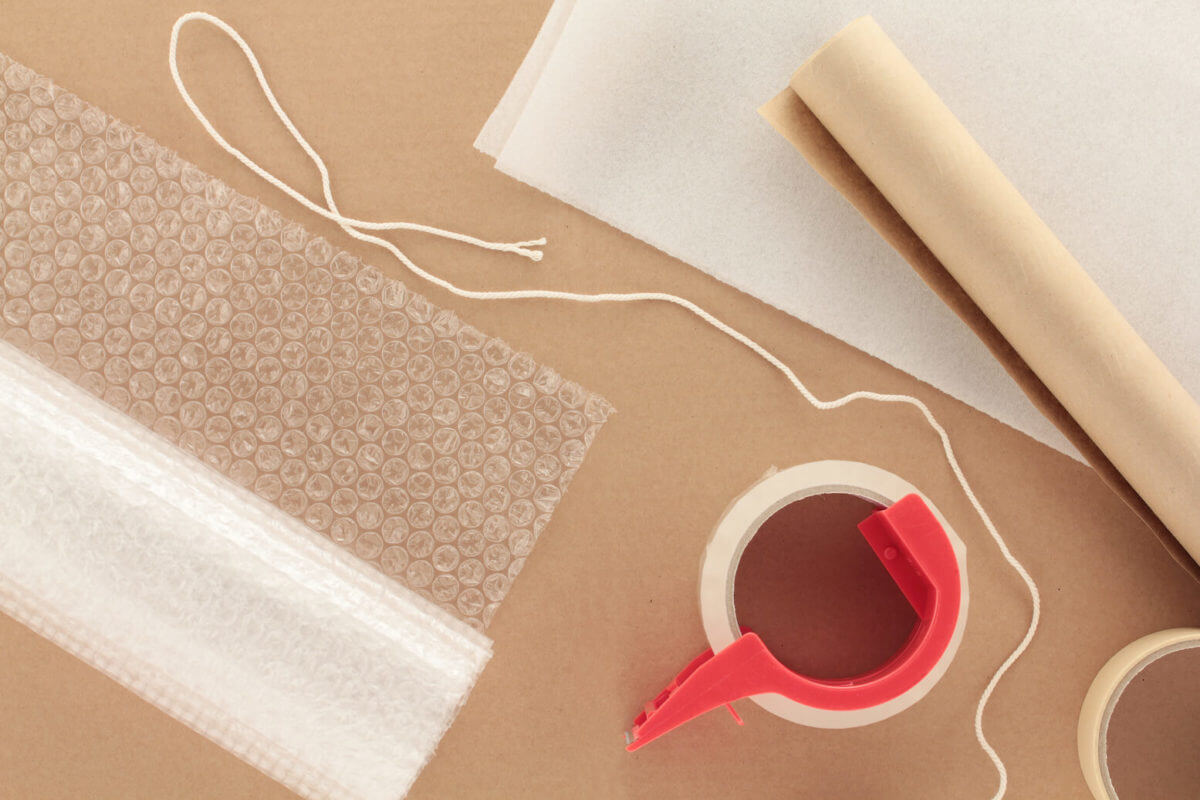

Choose Packing Strategies for Different Kitchen Items
When preparing for an international move, tailoring your packing strategies to the specific types of kitchen items is essential. From learning how to pack plastic kitchen items for moving to dealing with fragile glassware and sturdy appliances, each category demands careful consideration.
By selecting the appropriate packaging materials and methods for each type of item, you can safeguard your kitchen essentials and enjoy a smooth transition to your new home.
Packing Fragile Items Such as Glassware and Dishes
Dealing with delicate glassware and dishes requires a gentle touch to prevent chips and cracks. Begin by wrapping each item individually with paper or bubble wrap. Cushion the bottom of the box with protective material and place the wrapped items vertically. Fill any gaps with additional cushioning to prevent movement. Clearly mark the box as “Fragile” and take extra care when loading and unloading it. Here is a video tutorial on how to pack delicate items for shipping.
Packing Appliances and Electronics Securely
Appliances and electronics are crucial components of your kitchen. To package them securely, start by disconnecting and cleaning each item. Keep cords and accessories organized by securing them with twist ties or ziplock bags. Wrap appliances in bubble wrap or blankets, ensuring that any moving parts are immobilized. Place them in sturdy boxes, and use crumpled paper or cushioning material to fill any gaps and provide cushioning.
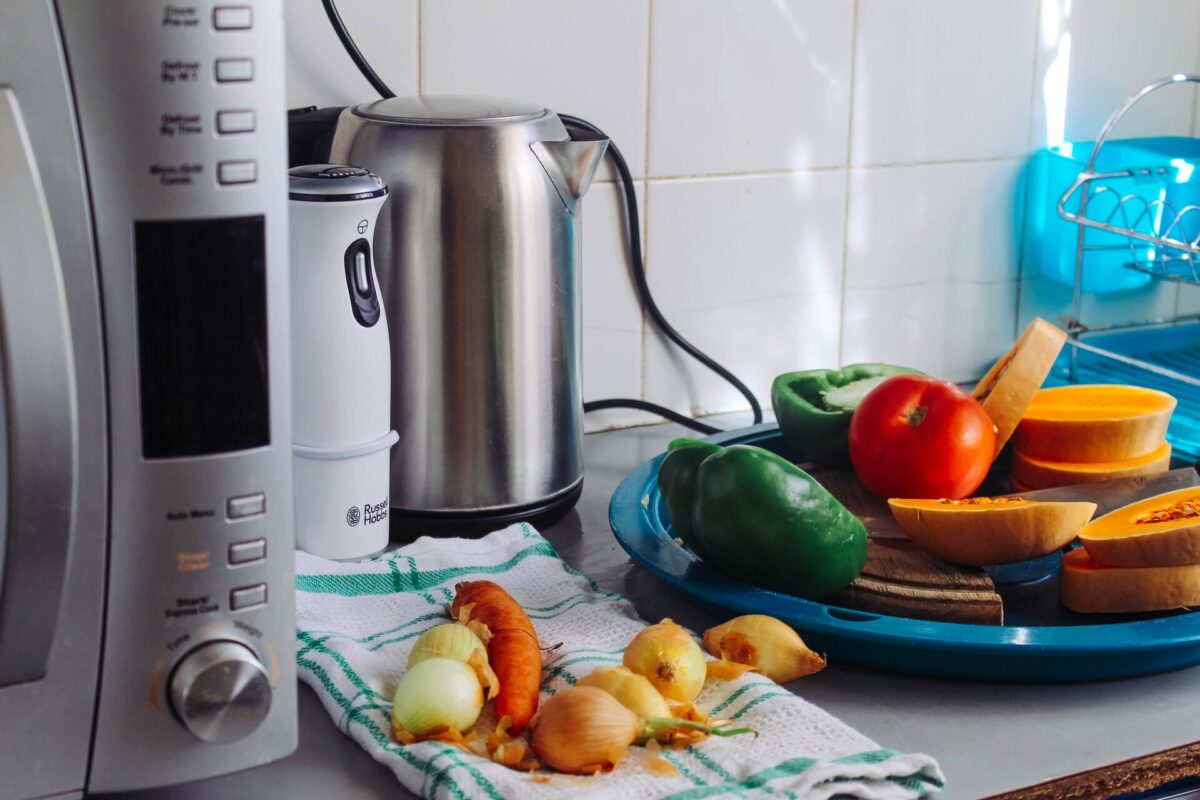

Packing Pantry Items and Non-Perishable Foods
Your pantry items and non-perishable foods can often be packed closer to the moving date. Place items in sealed containers to prevent spills. For glass jars and bottles, consider using plastic wrap around the lids and then securing them with duct tape.
Check for any items that may have expired or won’t survive the move and consider donating or discarding them. Remember, transporting certain food across international borders might be subject to regulations, so research the rules of your destination country. For example, if you are traveling from the USA to the EU, you will not be allowed to bring animal products, food, or plants according to EU regulations.
You will be surprised what some countries ban from importing, so make sure you know all the rules and laws before traveling. For example, if you plan to relocate to Singapore, you should know that they have strict no-chewing gum laws.


Labeling and Organizing is a Must
Properly labeling and organizing your packed kitchenware is essential for a smooth unpacking process. Use labels for boxes and clearly label each box with its contents. This not only helps you locate items when you arrive but also enables movers to handle your possessions with care. Designate a box as your “Essentials” box, packing items you’ll need immediately upon arrival, like basic utensils, dish soap, and a few pantry essentials.
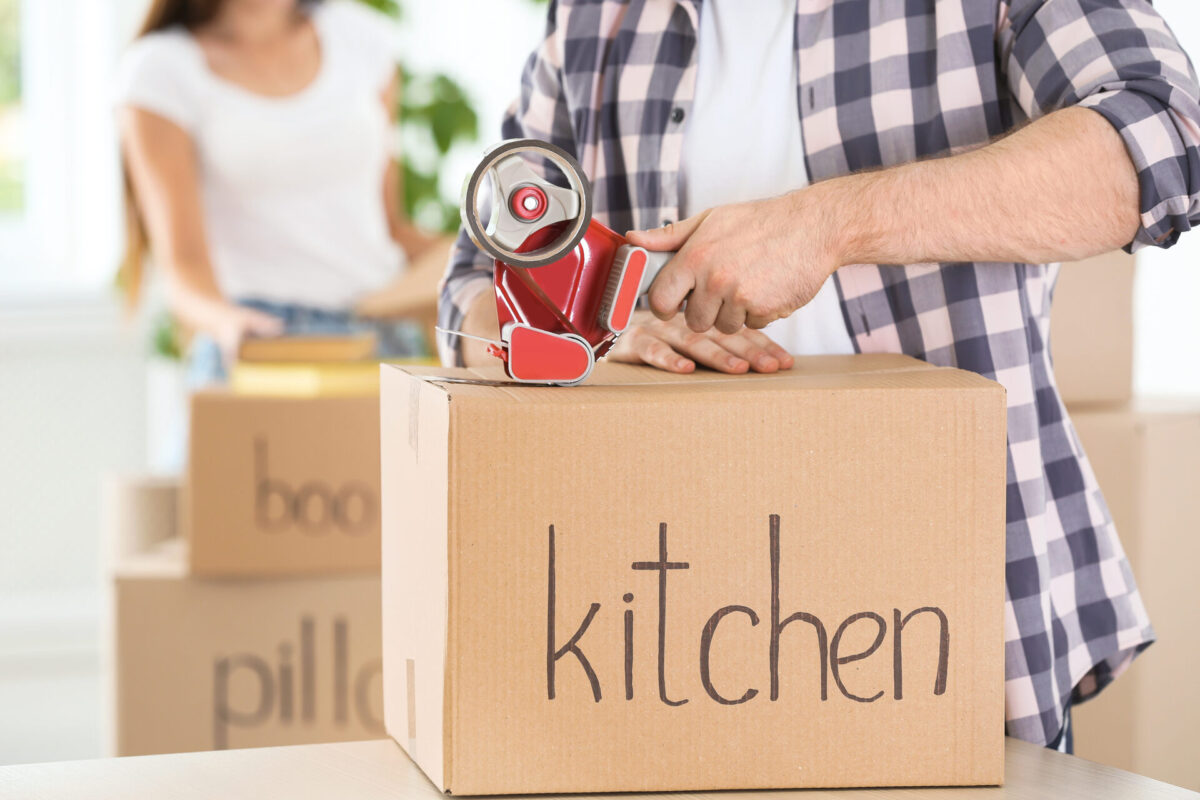

Hire Professionals to Help You With the Whole Packing Process
Undertaking an international move involves an array of challenges, and one way to alleviate the stress is by enlisting the expertise of professional movers. Hiring professional movers to assist you with the entire process offers a host of benefits that can make your transition smoother and more efficient. Since you will probably have to hire an overseas moving company for moving services, you can consider hiring them for boxing-up as well.
Also, when choosing an overseas shipping company, pick the one that offers international moving by sea, since shipping kitchenware if moving by air may not be cost-effective.
Hire Movers for Packing Services
Moving across the world is not an easy task, and you need to be prepared that your belongings will be handled by many hands and that proper boxing up is one of the most important steps you can take in order to prevent any damage. However, if you feel this task is overwhelming, you can always hire movers for assistance.
Every decent international moving company, like Sunset International Shipping, offers both full and partial packing services. So you can opt to hire movers only to package delicate items or the ones that are most difficult to be packed with partial service. Here are some benefits you will have if you opt to hire professionals:
- Experience and expertise – Professional movers bring years of experience to the table. They are well-versed in handling a variety of items, including delicate kitchenware, bulky appliances, and valuable possessions. Their expertise ensures that each item is packed with care and precision, minimizing the risk of damage during transit.
- Efficient packing – Time is of the essence during relocation, especially an international one. Professional packers follow streamlined processes to efficiently pack kitchenware, optimizing space within boxes while ensuring items are well-protected. This level of efficiency can significantly speed up the overall relocation process.
- Specialized materials – Professional movers come equipped with specialized packaging materials designed to safeguard different types of items. From custom-sized boxes to cushioning materials tailored for fragile glassware, these supplies contribute to the safe transport of your kitchen essentials.
- Reduced stress – Boxing up an entire kitchen for an international move can be overwhelming. Entrusting this task to professionals frees you from the time-consuming and often daunting process. It allows you to focus on other aspects of your move, such as adjusting to a new culture and settling into your new home.
- Insurance coverage – Reputable moving companies offer insurance coverage for your possessions. This means that in the rare event of any damage during relocation, you’ll have the added security of compensation, providing peace of mind throughout the process.
Follow Our Instructions and There Won’t Be a Problem With Kitchen Items
Embarking on an international move can be a thrilling but complex journey, especially when it involves boxing up your beloved kitchenware. However, armed with the insights and strategies shared throughout this guide, you can navigate the process with confidence. To make this transformative journey even smoother, we encourage you to consider enlisting the expertise of Sunset International Shipping.
Our team of professionals will handle every aspect of the packing process, leaving you with the time and energy to focus on embracing your new chapter. Trust us to guide you through this process, and you’ll find that your kitchen’s heart and soul will seamlessly travel with you, ready to create new memories in your international home. Contact us today, and let us make your move a truly remarkable experience.
FAQ
It’s recommended to start boxing up your kitchenware at least 3-4 weeks before relocation. This allows you ample time to declutter, sort, and package efficiently, ensuring a smooth transition.
Yes, delicate items like wine glasses require extra care. Wrap each glass individually with paper or bubble wrap, and use dividers or cardboard inserts within the box to prevent movement. Clearly label the box as “Fragile.”
Disassemble removable parts and wrap them individually. Use bubble wrap or blankets to protect the main body, and put the parts together in a box. If possible, refer to the manufacturer’s packaging for guidance.
It’s generally not advisable to take perishable foods for an international relocation due to the risk of spoilage. Consume or donate these items in advance.
Yes, notifying utility providers about your relocation is crucial. Make arrangements to disconnect services at your current location and set up utilities at your new destination to ensure a seamless transition.
When unpacking, prioritize setting up your kitchen essentials first. Group similar items together and store them in cabinets and drawers according to their usage. Consider the layout of your new kitchen when deciding where to place different categories of items.
Use proper packaging materials such as bubble wrap, paper, and sturdy boxes. Package fragile items snugly and cushion them with soft materials. Label boxes as “Fragile” to ensure careful handling.
Accidents can happen. If you realize you’ve left behind or lost a kitchen item, assess its importance. If essential, consider purchasing a replacement. Otherwise, use this as an opportunity to explore new options in your new location.




